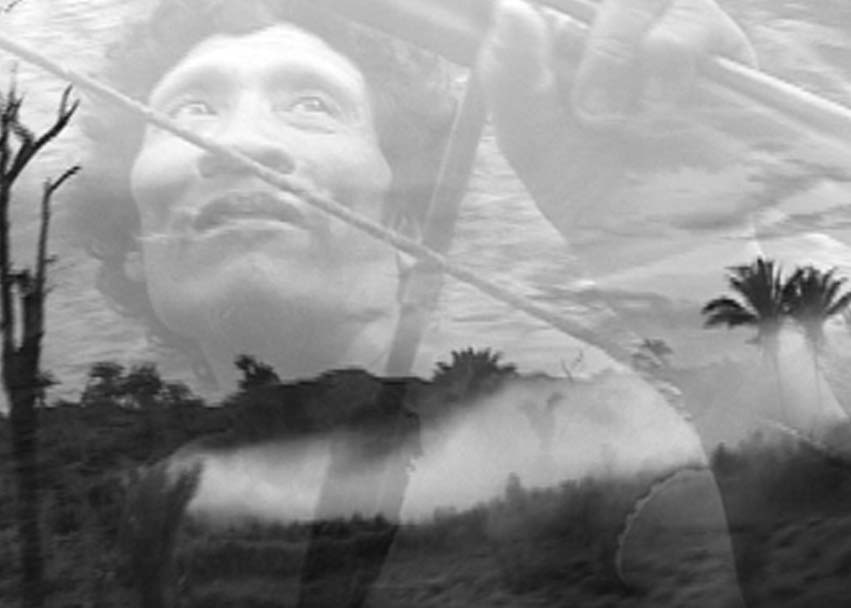The Brazilian Institute of Museums (IBRAM) promotes the 9th Spring of the Museums, until next Sunday (27), under the theme “Museums and Indigenous Memories”. In Curitiba, the Cine Guarani, Cultural gate, It integrates the programming displaying two programs, with 4 shorts each, and a feature on the theme. Sessions take place from Tuesday to Sunday (22 to 27), às 17h, with free tickets.
IBRAM considers that the sociocultural diversity of the more than 200 Indigenous peoples living in our country is one of the largest assets in the national territory and museums are important spaces for the guard and transmission of the stories of these peoples. More than 2.400 Events across the country, in about 800 different institutions, aimed at the indigenous cause.
Programming:
Days 22 and 23:
Video in the villages
Genus: Documentary
– “Nguné Elü - The day the moon menstruated”, by Marica Kuikuro and Takumã Kuikuro (2004, 27’)
During a video workshop in the village Kuikuro, high, An eclipse occurs. Suddenly, Everything changes. Animals become. The blood drips from the sky like rain. The sound of the sacred flutes crosses the darkness. There is no more time to lose. We need to sing and dance. You need to wake the world again. Kuikuro directors tell what happened on this day, The day the moon menstruated.
– “Back to Terra Boa”, of Marrials and Vincett Carelle (2008, 21’)
Men and women Panar will narrate the trajectory of determination and reunion of their people with their original territory, From the first contact with the white man, in 1973, passing through exile in the park of Xingu to the fight and regaining the possession of its lands.
– “Prîara Jô - After the egg, to war”, Komoi Panará (2008, 15’)
Children Panar will present their universe on a day of play in the village. The time of the war is over, But still still alive in the imagination of children.
– “HUNI MEKA - The corners of the vine”, de josias Maná Kaxinawá e Tadeu Siã Kaxinawá (2006, 25’)
Uma conversa sobre cipó (ayahuasca), “miração” e cantos. A partir de uma pesquisa do professor isaías Sales ibã sobre os cantos do povo Huni Kui, os índios resolvem reunir os mais velhor para gravar um CD e publicar um livro.
Days 24 and 25:
BRASIL INDÍGENA
Genus: Documentary
Sign up to receive Event News
and the Universe of Arts first!
– “Âgtux”, de Tania Anaya (2005, 22’)
A etnia Maxakali habita o Vale do Mucuri, in the State of Minas Gerais. DSonos de um notável refinamento plástico e sonoro, os Maxakali vivem sob uma sombra de miséria amplamente divulgada pela mídia. O filme busca o que falta nas notícias: a riqueza dos grafismos, da língua e da vida cotidiana. Âgtux significa “contar histórias”.
– “Jornada Kamayurá”, de Heinz Forthmann (1966, 11’)
No Alto xingu, próximo à Lagoa de Ipaivu, Kamayurá tribe Indians live. In the morning, Men go hunting, the girls reap fruits and the boys take grasshoppers. To slow, Men are dedicated to cotton culture, observed by the boys. Women reserve most of their time to family care. At dusk they exchange impressions on the day. At night they play flute, Sing and dance. A day in the cordial and humorous life of the Kamayurá.
– “Burundi, the red guy”, by Luiz Eduardo Jorge (1999, 29’)
The documentary trajectory of filmmaker and photographer Jesco von Puttkmer, in which he revisits his cinematic work built over four decades with indigenous groups of the Brazilian Amazon.
– “I kill them?”, de Sérgio Bianchi (1983, 34’)
Funai is an indigenous protection organ or a wood extraction industry? The last Indian of the Xetá tribe must be listed by the historical heritage? It is better business to buy the indigenous land and remove the wood, or denounce who does it?
Days 26 and 27:
Mountains of the disorder (2006, 136’)
Description: Carapirú is a nomadic Indian who, after escaping the massacre of your family group in 1978, perambula alone for the mountains of central Brazil until it is captured, ten years later, to 2 thousand kilometers away from your escape/departure. Taken to Brasilia by sertanist Sydney possesses, becomes national headline and center of controversy created by anthropologists and linguists about its origin and identity.
Direction: Andréa Tonca.
List: Carapirú, Tiramukon, MyHachiá, Sydney Ferreira.
Rating: 10 years


Cine Guarani participates in the programming of 9th Spring of the Museums
http://t.co/1k4Kfhqtl2 http://t.co/0kTGB9vc6L
The Brazilian Institute of Museums (IBRAM) promotes the 9th Spring of the Museums, until next Sunday (27), under the theme… http://t.co/SpUgylNpa0
The Brazilian Institute of Museums (IBRAM) promotes the 9th Spring of the Museums, until next Sunday (27), under the… http://t.co/pfD94qnm5p